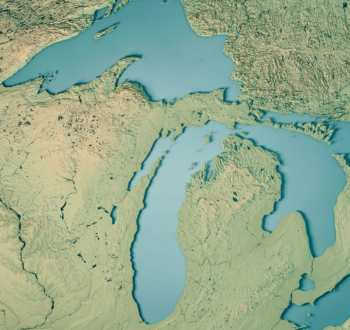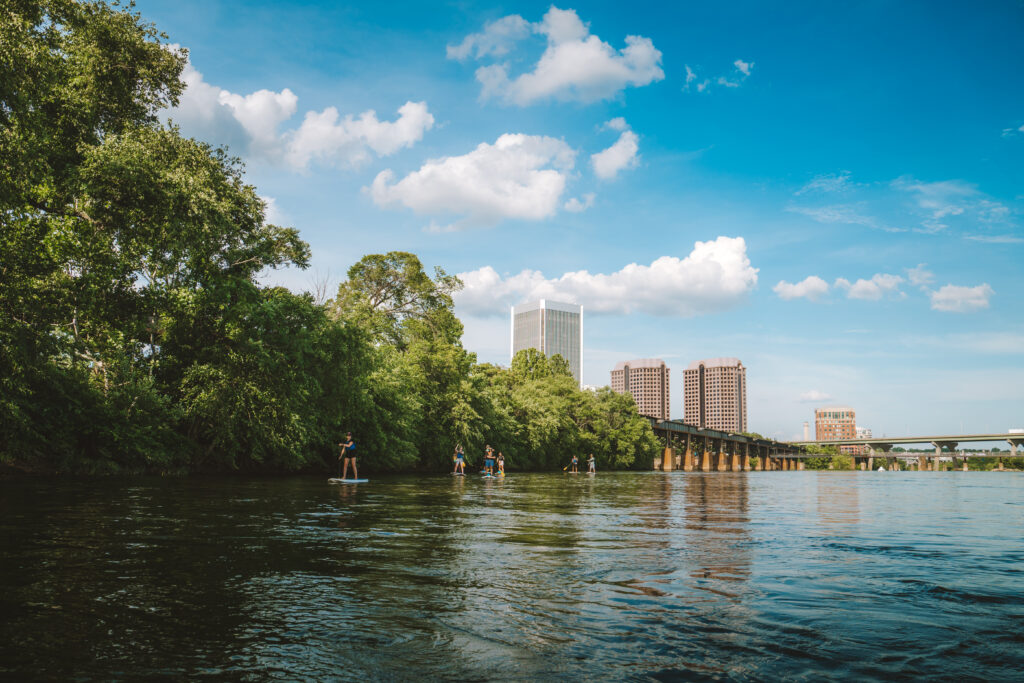Protecting Drinking Water in the Great Lakes
Great Lakes states should ensure clean, safe drinking water for all residents. New report shows how Michigan, Ohio, and Wisconsin are implementing the Safe Drinking Water Act.

Do you ever wonder if the water coming from your tap is safe to drink? For some of us, we think about it every day.
Over the past few years, Great Lakes residents have started to pay VERY close attention to the safety of their drinking water. This region has been affected by toxic algae, lead, and now chemicals from sludge waste. I’m left wondering what we will be hearing about next.
 So, how do we ensure that our water is safe? Is it a federal, state, or local issue? Or do all levels of government play a role? What can I do as a resident to educate myself on this issue?
So, how do we ensure that our water is safe? Is it a federal, state, or local issue? Or do all levels of government play a role? What can I do as a resident to educate myself on this issue?
With all of these questions in mind, American Rivers set out to find some answers.
First, we partnered with the Great Lakes Environmental Law Center to begin researching how the Safe Drinking Water Act (SDWA) is being implemented in Great Lakes states, focusing first on Michigan, Ohio, and Wisconsin. We wanted to know if any of these states are currently going above and beyond what the federal Safe Drinking Water Act requires them to do. We also wanted to know how they compare with each other.
Next, we reached out to representatives of regional and state conservation organizations, environmental and social justice organizations, grassroots activist groups, private foundations, scientists, and other interested persons to participate in listening sessions. In total, we held six listening sessions, two for each state (MI, OH, and WI). At those sessions, we presented topics we thought were important to explore as well as questions we wanted to answer. We asked for feedback on whether or not those were the right questions and topics because we would eventually draft a report to address them. We also wanted to learn what we were missing. We learned a lot about the importance of key issues like lead and algae toxins, but we also learned about issues we didn’t know were issues. For example, we didn’t fully appreciate the significance of operator certification and private water wells as drinking water issues in the Great Lakes. As a result of these conversations, topics and questions were added and modified.
Moving forward we had to be realistic in what could be researched and included in this report. Ultimately, we focused this report on eight aspects of the SDWA: maximum contaminant levels, treatment techniques, and monitoring standards; regulation of lead as a drinking water contaminant; consumer confidence reporting; loans and grants; public participation in standards development, permits, and enforcement; operator certification; management of drinking water emergencies; and management of algal blooms. While not regulated by the SDWA, as a way to better understand states’ overall approach to drinking water, the report also looks at how states regulate private water well protection through private well construction codes and through regulation of other activities that can pollute private wells. This report describes the drinking water safety laws as they are, not as they were in the past or as they should be in the future.
There were many applicable topics and questions that were discussed in the listening sessions that the report does not address such as the emergency manager law that has such a profound effect in Michigan. The report does not look behind the legal schemes to evaluate how well states and water systems are implementing them nor does it provide prescriptions or recommendations for how states can and should improve their laws. The report looks at states, but not at tribal jurisdictions within the Great Lakes who have their own drinking water scheme. The report does not address other SDWA topics such as source water protection as a whole (though it does address certain aspects of it), wellhead protection programs, sole source aquifers, analytic methods, and reporting and recordkeeping.
Given that each state is unique, we wanted to give the reader a baseline of information regarding the SDWA and how these laws are interpreted in Michigan, Ohio, and Wisconsin, which could then inform advocacy efforts and policy action plans in each state. Anyone who wishes to understand the deficiencies and develop recommendations for improvement will need to start with what the laws are currently.
This will be a dynamic, iterative process. We intend to expand the report to address Illinois, Indiana, Minnesota, New York, and Pennsylvania. That expanded version will also address any changes to Michigan’s, Ohio’s, and Wisconsin’s legal schemes. It may also expand into additional topic areas.
If you are active on drinking water in Great Lakes states, please reach out to me to be included in the next round of listening sessions this spring. We want to make sure the issues that are important to you are included.
[su_button url=”https://www.americanrivers.org/conservation-resource/protecting-drinking-water-great-lakes/” background=”#ef8c2d” size=”5″ center=”yes”]View the report »[/su_button]




1 response to “Protecting Drinking Water in the Great Lakes”
This is great step towards avoiding water scarcity The main reason for water scarcity is the wastage of rain water. If we save the rain water then there will be no problem in the summer seasons.So it will be good if all know get t know about this way of saving rain water and use it in the later stages. The lack of water is lead to the increase in the usage of Lorry Water Suppliers in Chennai hope that the other major cities take action and avoid such situation.